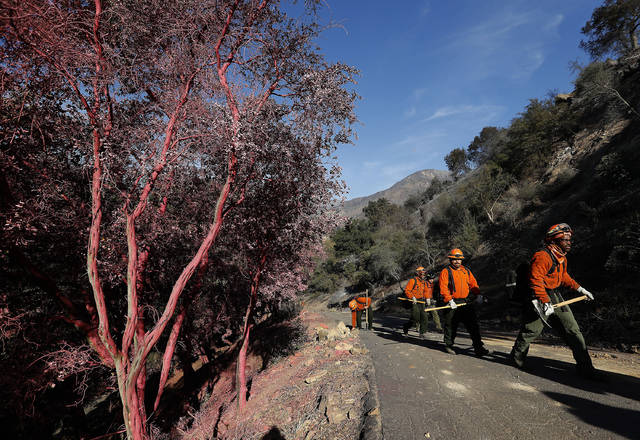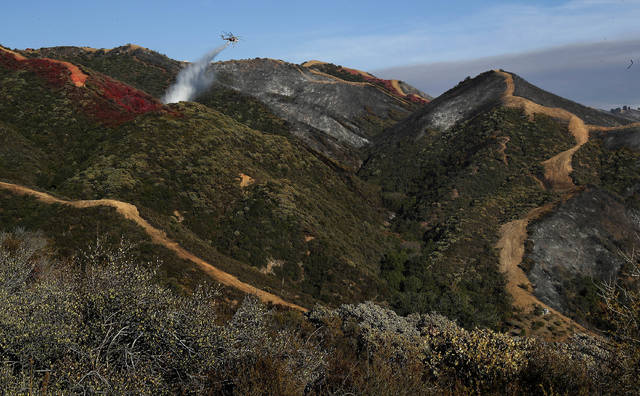LOS ANGELES — After a brief respite from the relentless gusts that have driven the deadly Thomas fire for more than two weeks, gusty winds are expected to return, adding to the challenges facing firefighters working to contain the mammoth blaze.
The fire, which began near Santa Paula in the foothills above Thomas Aquinas College on Dec. 4, had burned through 271,750 acres as of Tuesday morning.
The Thomas fire was on track Tuesday to become California’s second-largest wildfire. It was just 161 acres smaller than the second-largest fire on record, the lightning-sparked Rush fire that burned 271,911 acres in Lassen County in 2012.
The Thomas fire was 50 percent contained, and fire officials do not anticipate full containment until Jan. 8, according to the California Department of Forestry and Fire Protection.
Firefighters tried to take advantage of weaker winds Tuesday. The Ventura County Fire Department on Tuesday morning reported “another productive day” Monday, but with four wind transitions on the mountaintops.
Forecasters predict a new blast of Santa Barbara’s notorious sundowner winds, which blow down the canyons to the coast, late Wednesday afternoon and Thursday morning. The winds could create crucial fire conditions for the western side of the blaze in southern Santa Barbara County.
Northerly gusts will likely exceed 40 mph, with isolated gusts of up to 60 mph possible, according to the National Weather Service.
The Santa Barbara County side of the fire will be affected by the strong winds first, on Wednesday afternoon and evening. Winds will then pick up on the Ventura County side Wednesday night and Thursday morning, said Joe Sirard, a meteorologist with the National Weather Service in Oxnard.
While winds pick up in Ventura County, they will decrease in Santa Barbara County, he said.
“It is a very large fire, so you’re going to have different wind effects over different parts of the fire,” he said.
High fire danger will exist in Los Angeles County this week as well, he said.
The winds should die down a bit Friday, but another round will return Saturday night and Sunday.
Sirard said the Thomas fire had burned a remote automatic weather station in the Montecito hills. The instruments provided data about wind speed, air and soil temperature, and humidity.
There was minimal fire activity overnight Monday, allowing fire crews to strengthen their containment lines, according to Cal Fire. Fuel in the area remains critically dry, posing an especially acute danger when the winds pick up.
Firefighters are “not quite done” on the southern edge of Montecito, where the fire pushed up against 1,300 homes and damaged 15, said Rudy Evenson, a spokesman for the multi-agency firefighting effort.
Crews on Tuesday planned to burn a section of Los Padres National Forest in an attempt to further contain the fire, he said.
“We want to manage it as lightly as we can,” Evenson said.
Helicopter water drops were planned in an area near Fillmore called Bear Heaven. The threat to the city of Fillmore has decreased because firefighters were able to complete a control line from the town to Devil’s Gate, fire officials said.
On the fire’s north and east sides, it continues to burn farther into the Matilija and Sespe wilderness and toward the Sespe Condor Sanctuary, according to Cal Fire.
As the blaze becomes more contained, fire departments from other jurisdictions will start traveling home, Evenson said.
“It’s drastically ramping down right now,” he said. “It’s nowhere near the scale that it’s been the past two weeks.”




